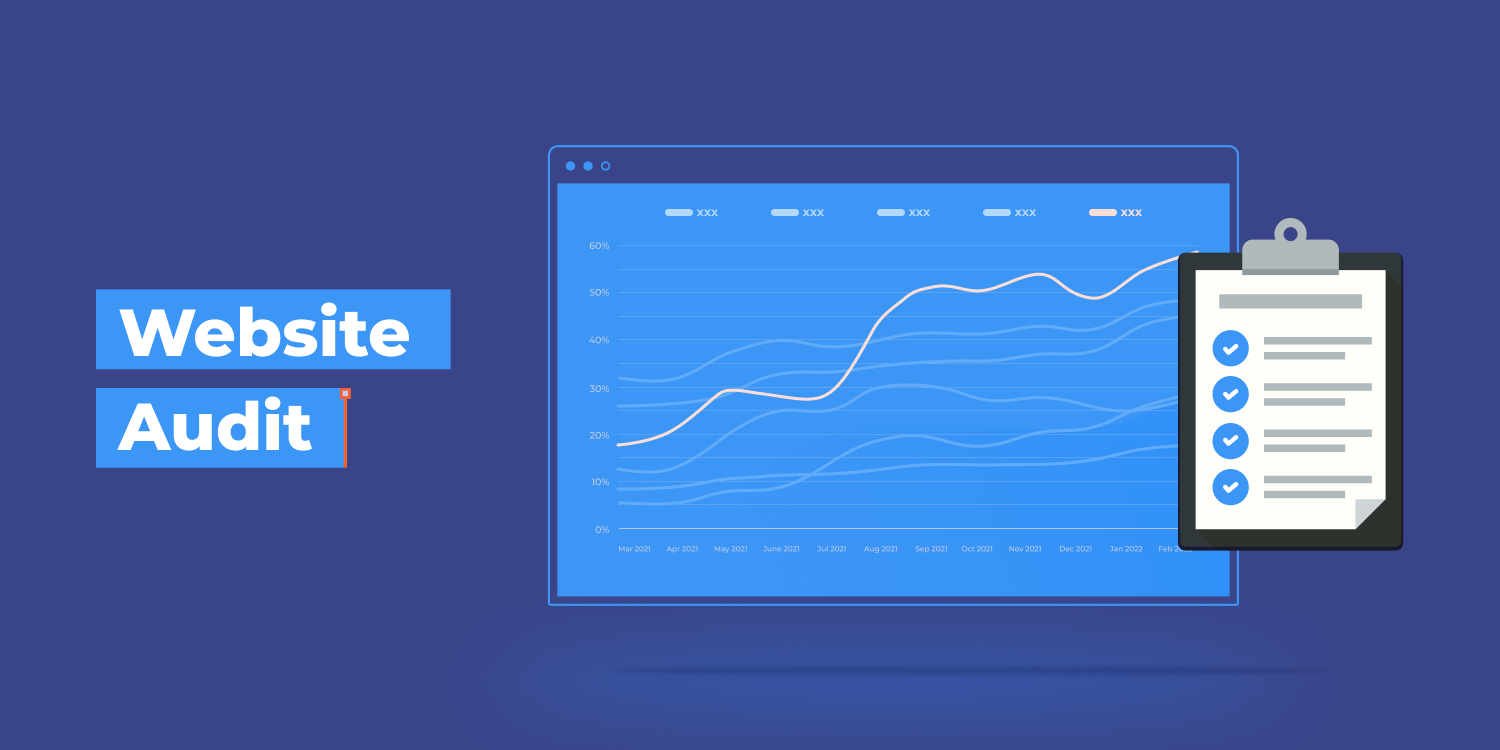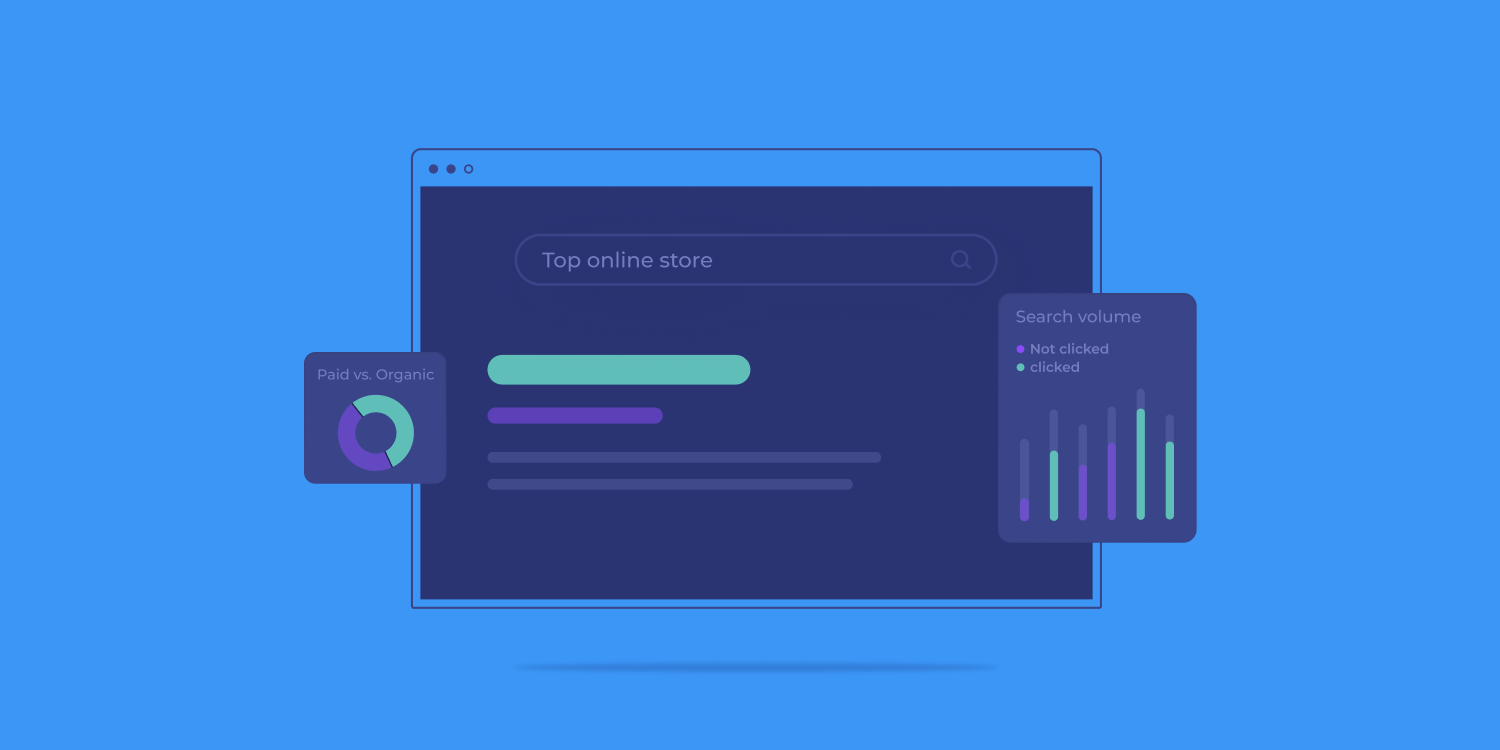A website doesn't have to underperform in order to be eligible for a website audit. While that’s one of the reasons to run an audit, there are countless others to do so. You’ve probably encountered them as an agency, when planning a
website redesign, or taking on a new client.
Whatever the reason may be, these are opportunities to evaluate your clients’ websites, their strengths and weaknesses (or their ‘health’, as a lot of folks like to call it) from different perspectives. While SEO site audit is the most common perspective, there are other lenses through which you can run website audits, such as conversion rate audits, design and UX audits, security audits, and so on.
The potential is massive; by thoroughly examining a website you can improve its performance, SEO and conversion rates as well as identify technical or security issues and even do a little bit of competitive analysis.
While it may seem quite overwhelming at first, a well-structured method for auditing websites can turn the entire process into a well-oiled machine. Relying on our experience with websites, and after speaking to a lot of professionals like yourselves, we’d like to offer our two cents on this practice of website auditing.
Since there are a lot (A LOT) of factors to take into account, this guide will walk you through the basics of what to focus on, while referring you in some cases to other resources for more in-depth info. Let’s start with the obvious: the SEO website audit.
SEO Audit (Content and Technical)
You can perform both on-page and off-page SEO, as well as technical SEO. And as there are hundreds of ranking factors, the list of possible things to check is extensive. We’re going to just touch the tip of the iceberg. For a more in-depth look, we recommend you visit the big shots in the field of SEO:
Search Engine Journal,
Moz checklist, and
ahrefs 16-Step SEO Audit Process.
So what is the tip of the iceberg?
- First and foremost, crawl the website. You can use various crawlers such as
Semrush and
Screaming Frog.
- You can also use
HubSpot Website Grader to detect technical issues.
- Using the
GSC index coverage report, verify pages are indexed (excluding pages you don't want to be indexed).
- Review redirects’ status.
- Review broken links.
- Fix duplicate content.
- Clean up your sitemap to only include relevant pages.
- Audit your
Core Web Vitals ranking (did you know that Duda is leading the Core Web Vitals Report?).
- For on-page SEO, start with your top traffic pages, most important pages, or pages that have traffic drops.
- Perform keyword analysis – check what you are ranked for and that you have a dedicated keyword (primary keyword) for each page, placed properly throughout.
- Review meta descriptions (for improved CTR), title tags, page titles, images, links, and URLs.
- Track backlinks and remove bad backlinks using the
Google Disavow tool.
Conversion Rate Optimization (CRO) site audit
As the name implies, a conversion rate optimization site audit is all about assessing the website to check if it is performing well, conversion-wise, and identifying areas that require improvement.
Considering that you do have an MVP (minimum viable product), substantial site traffic (YAYYY) and business goals, there are things you’ll need to examine:
- Implement proper tracking
– Google Analytics goals are your best friends. Create meaningful goals and remember that goals aren’t retroactive, which means they only begin picking up data after you set them.
- Check that site speed is fast enough
– you can use
Google’s PageSpeed Insights, Pingdom, GTmetrix, or any other tool. It’s advisable to test site speed with two or three tools to get a well-rounded, unbiased measurement.
- Assess the main navigation and make sure it’s intuitive. If potential customers can’t easily find the desired product or service, they leave the site in frustration, and conversion rates suffer. On the actual landing pages, remove the navigation bar because it distracts from the single goal, which is to convert.
- Analyze website traffic. Go through the site’s traffic and try to identify market segments or demographics with low bounce rates and other metrics indicating a higher probability of conversion. Use this information to tailor marketing campaigns, design, and website copy.
- Analyze content assets (blog posts, landing pages) and see if they’re optimized to achieve their conversion goal.
- Test CTAs.
Run A/B tests that keep everything the same on your landing pages except for the call to action. Vary things like the wording, button colors, (including background, font, and hover) and on-page location.
- Analyze pop-ups.
Often the victim of a bad reputation due to poor implementation, pop-ups can be incredibly powerful conversion-boosting tools. It’s important to regularly assess how well your pop-ups convert. Ensure pop-ups complement the site’s design, try to tweak the messaging for different segments, and avoid annoying pop-ups that immediately display upon visiting a page.
- Test forms.
Similar to your CTAs, try to A/B test different forms for signing up for demos, trials, or newsletters. Tweak the design, try fewer or more fields, and gauge the results.
- Evaluate UX and design. Real-world feedback about your user experience is critical for improving conversions. Consider paying for a user testing platform to get an unbiased appraisal of UX and design.
- Verify if mobile functionality is intact. As people continue to make purchases from their phones, businesses that have poor mobile functionality stand to lose a lot of potential revenue. An overlooked tip is to periodically browse your site from a couple of different smartphones and go through the conversion process to check if everything works as smoothly on mobile as it does on desktop.
You should have at your disposal a lot of data generated from heatmaps, user testing, A/B testing, Google Analytics, Google Search Console, etc. Also, based on your audit report, you can create CRO campaigns and test the waters.
Design and UX website audit
While this will also be reviewed to some extent in the CRO audit, it is well worth auditing separately, because it’s focused on design and user experience as a whole, rather than just conversion-dependent user experience and design. But obviously there will be some overlap. Here as well, Google Analytics (time on page is key) and heatmaps can be quite useful in identifying usability issues.
The key points to notice are:
- Navigation – it should come as no surprise that it’s the first on the list. Your first priority is to check how simple it is to navigate through the website (worth checking how many clicks it takes to reach each point from the homepage).
- Responsiveness – site pages should look good on a variety of different devices and adjust dynamically to different screen sizes. You can use Developer Tools in Chrome to easily test site responsiveness.
- Critical pages
- While examining all pages is required, start with the main navigation pages and critical pages (Red Routes pages). Check these pages for usability issues.
- Branding – you are the brand police, make sure the brand is consistent across all pages (including all elements, such as colors, typography, images, messages, CTAs, and so forth).
- Forms
– ensure that forms have good usability, including failure indicators, success messages, and so on.
- Fonts – not too many types of fonts (three max), readable, consistent.
- Visual hierarchy – verify if it correlates with messaging priorities.
Another aspect of user experience that should be examined is accessibility, which leads us to the next section.
Website accessibility audit
Website accessibility is all about ensuring your website meets accessibility guidelines. It’s important for many reasons, starting from understanding how common disabilities really are (VERY! One in four Americans lives with a disability), the legal aspects of it, improved user experience and, of course, opening your clients' websites to new users and additional sales/revenue. More importantly,
clients expect their web agencies to make sure that the websites they are building for them are accessible.
So what does a website accessibility audit include? The first thing you can do is follow the
Web Content Accessibility Guidelines, but here we summed up the key things to audit:
- Alt Text – you will also cover this in your SEO audit, but here as well, you need to include alt text for non-text elements.
- Page title.
- Body text should be 16px or more.
- Large text (headings) should be 24px or more.
- Contrast – create enough contrast between the text and the background according to the ratio presented at the WCAG (4.5:1).
- Line spacing should be at least 1.5 times the size of your font.
- Allow resizing of the text (smaller or bigger).
- Keyboard navigation – allowing navigation through your pages via the “Tab” button.
- Forms should include visual labels.
- Allow control over content that moves such as animations.
- Provide alternatives to video content such as captions, audio, and text transcripts.
- Make sure that any links on a page describe where the link is going rather than listing the URL.
- Underline all links to make them stand out as such Altering text color alone does not suffice.
- For complex images such as charts or graphs, try to provide a text alternative with the same information.
- Use headings to give structure to your web pages rather than using them as visual design elements.
- Fix any instances where a page’s headings don’t follow a logical order (for example, H3 appearing before H2).
- Avoid auto-playing any video or audio elements on the page.
Website content audit
A systematic analysis and inventory of a site’s content is a critical part of any website audit. It’s important to distinguish a content audit from an SEO audit. Content obviously plays a crucial role in SEO results, but so do many other factors that aren’t related to the site’s content. Furthermore, content affects many business goals beyond just SEO results, including audience engagement and conversion rates.
Since content takes up an average of
20–30 percent of modern marketing budgets, it’s kind of a big deal to analyze and assess content performance. Here are some of the most useful ways to take stock of how a website’s content is doing and where to identify potential areas of improvement:
- Gather all relevant URLs, ideally using a content audit tool that helps you quickly build an inventory of content assets you want to audit (e.g., blog posts, webinars, and news articles).
- Create a content audit spreadsheet that builds on this inventory by cataloging the content with additional info, including content type, length, and goal.
- Pull in data such as social shares, backlinks, sessions, session duration, page views, bounce rate and last updated date for each unique URL from tools like Google Analytics and content audit platforms.
- Use the content inventory along with a content audit tool to assess the performance of content assets in achieving their goals.
- Based on your assessment, organize content assets into different buckets or statuses, such as “Update, Repurpose, Delete, and Keep.”
- Prioritize an action plan based on what’s most efficient in helping content achieve its goals. This could include combining different content assets, expanding an existing blog post, or even just adding a new statistic from an authoritative source.
- Suggest updating your entire content marketing strategy if a content audit shows significant underperformance in achieving important goals. Some audiences prefer certain types of content, and an audit may uncover this preference.
Best website audit tools
While it’s feasible to run a website audit without dedicated auditing tools, it’s neither advisable nor efficient. Tools can help dramatically streamline your auditing process and save tons of time. But with so many platforms and tools to choose from, how do you decide what’s worth paying for? Here’s a quick run-through of some of the top website audit tools to consider:
- Google Analytics is a free tool that provides value in several areas of a website audit from SEO to CRO.
- SEMrush has an excellent Content Audit tool that not only finds all your URLs but also helps categorize them for further analysis.
- Google Search Console is another free tool that you can use on its own to perform an SEO audit that covers important SEO areas such as page experience, indexability, crawlability, content quality, inbound links, schema, and performance.
- Use a dedicated CRO tool to perform accurate on-site experiments; the particular tool you choose will depend on your own budget. Some paid tools audit the CRO on websites for free to encourage signups. Examples of CRO tools include Convertica, Hotjar, and Google Optimize.
- You might have an eye for web design, but real-world UX and design feedback through a platform (e.g., Survicate, UsabilityHub) is worth seeking out if you audit many websites.
Use a variety of open source tools to assess website accessibility, such as web.dev or WAVE.
See here for a full list of over 160 tools.
Final thoughts
There is admittedly a lot to absorb when it comes to website audits. By sticking to the fundamentals and referring to the information presented here, you can conduct a thorough audit on any client’s website. With time and a repeatable process, you’ll figure out a plethora of new ways to add more value to your client relationships through a website audit.
Related Posts
By Stephen Alemar
•
October 23, 2025
Discover why Duda is a top-rated website builder on G2, recognized for usability, easy setup, strong relationships, and excellent results, all backed by real reviews.
By Ilana Brudo
•
October 16, 2025
Discover why digital marketing agencies are choosing Duda over Wix Studio and WordPress for speed, reliability, and client experience, and how it helps them scale without operational overhead.
By Stephen Alemar
•
October 14, 2025
Duda vs. Brizy: Compare these website builders for agencies focused on scaling, client management, AI, eCommerce, and team collaboration.
Show More













